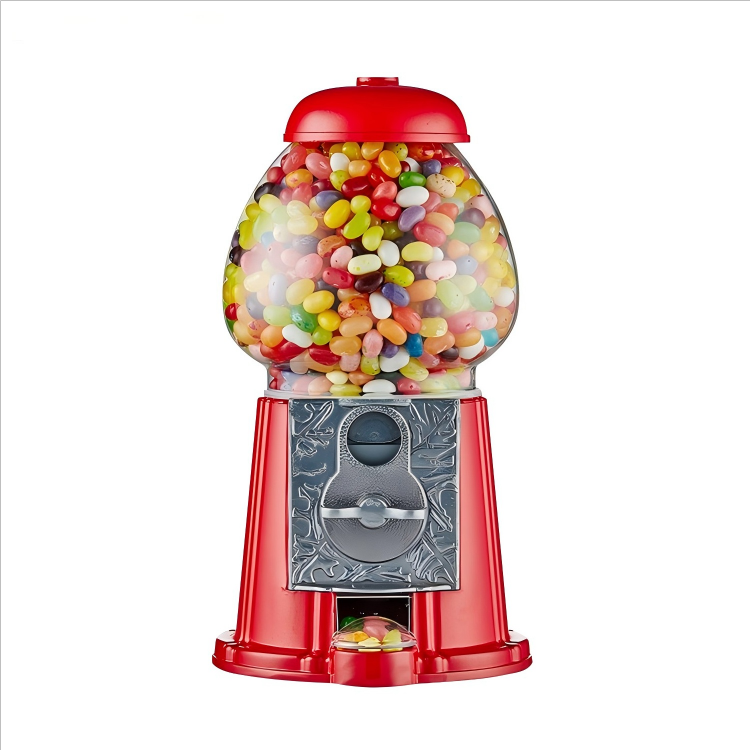Understanding Arcade Game Mechanics and Scoring Systems: A Comprehensive Guide for Operators and Players
Whether you’re an arcade game enthusiast, a player looking to master your favorite machines, or a venue operator aiming to maximize engagement and profitability, understanding the inner workings of arcade game mechanics and their scoring systems is essential. These mechanisms influence not only the gameplay experience but also how users interact with the machines, which in turn affects repeat visits and revenue generation.
This guide dives deep into the principles behind arcade game design, specifically focusing on game mechanics and scoring systems. We’ll explore how these systems impact player behavior and operational strategies, ensuring both sides of the coin—user enjoyment and business outcomes—are optimized.
1. Deep Dive into Game Mechanics
1.1 Defining Game Mechanics and Their Player Impact
Game mechanics refer to the rules and systems that dictate how a game operates and how players interact with it. In arcade equipment such as basketball shooting machine s, racing simulators , or interactive dance platforms, these mechanics determine how players score points, the challenges they face, and how the machine responds to inputs.
Key factors shaping player experience include:
- Player Input Accuracy: Precision in timing or movement heavily influences scoring.
- Power or Force Applied: For example, the strength of a basketball shot or steering input affects outcomes.
- Rhythm and Timing: Especially in rhythm-based dance or reaction games, syncing with the beat is critical.
- Positioning and Control: Control smoothness impacts race times or gameplay fluidity.
Having well-defined, intuitive mechanics ensures that players feel challenged yet capable, which sustains long-term engagement.
1.2 Breakdown of Scoring Mechanisms
The scoring system is designed around the game mechanics and usually integrates multiple components:
- Interactive Sensors and Controls: Modern arcade machines employ sensors to record player actions—such as accelerometers in racing games or touch-sensitive panels in dance machines—that feed data into the scoring algorithm.
- Scoring Rules: These include points for each successful action, bonuses for combos or streaks, and penalties for errors or missed inputs. For example, shooting games may reward consecutive baskets with multiplier bonuses.
- Game Modes: Different modes (timed, free play, challenge) have distinct scoring criteria impacting how points accumulate and what rewards unlock.
- Calibration and Maintenance Effects: Regular device calibration ensures sensors retain accuracy. Poor calibration can skew scores, frustrating players and undermining fair competition.
Understanding these elements helps players strategize and operators optimize their machines to maintain fairness and excitement.
1.3 Pay-to-Play and Reward Systems
Most arcade devices function via coin or token operation, accompanied by the following:
- Initiation Process: Once payment is registered, the game activates, sometimes offering introductory tutorials or practice rounds.
- Mode Selection: Players often choose between varied gameplay experiences, each with different scoring potential.
- Score Display and Redemption: Results are shown in real-time or at endgame screens, often with options to redeem points or earn tickets for prizes.
Clear processes encourage repeat plays and maintain user trust in the system’s transparency.
2. Detailed Analysis of Scoring Systems
2.1 Elements Influencing Scores
Scores typically hinge on measurable parameters:
| Parameter | Explanation | Example Impact |
|---|---|---|
| Strength / Power | The force or intensity of the player’s input | Hitting a basketball net with optimal power for maximum points |
| Speed / Timing | How fast or well-timed actions are executed | Pressing buttons in rhythm for dance games |
| Accuracy | Precision of the player’s movements or shots | Aiming a racing wheel perfectly on curves |
| Combo and Streaks | Continuous successful actions increasing multiplier bonuses | Scoring consecutive baskets without missing |
| Penalties | Deduction of points for errors or invalid moves | Missing timing windows in rhythm games |
Multiplayer and training modes can change scoring dynamics by adding cooperative or competitive elements, as well as providing feedback to hone skills without score pressure.
2.2 Common Scoring Grade Frameworks
Most arcade machines define scoring tiers to classify player performance, helping users understand where they stand and what to improve. A typical grading scale might look like:
- Beginner: Scores under 50% of max points
- Intermediate: Scores around 50-75%
- Advanced: Scores above 75%
- Expert: Top 95%+ scoring players
Differences exist by device — a basketball machine may base grades on shot consistency, whereas a racing simulator focuses on lap times. The grading serves as motivation and benchmarking.
3. Understanding Average Scores and Their Significance
The average score represents the mean result of multiple players or multiple attempts by a single player, essential for:
- Setting Performance Targets: Operators can adjust difficulty or rewards based on average scores to maintain challenging yet achievable expectations.
- Measuring Improvement: Players comparing their current scores against averages can track skill progression.
- Designing Balanced Gameplay: Balancing scoring algorithms to avoid overly punishing or too-easy experiences.
For example, if average points on a basketball arcade machine are 450 out of 1000, operators can use this data to tweak timing windows or ball trajectories for better engagement.
4. Strategies and Tips to Boost Your Scores
Improving scores requires a blend of physical skill and strategic approach tailored to each game’s mechanics. Key tips include:
- Coordination Training: Practicing smooth, consistent movements increases accuracy, vital for rhythm and aiming-based games.
- Speed Optimization: Developing quick reaction times to respond to prompts faster enhances combo potentials.
- Strength and Control: Balancing power with precision ensures optimal results, particularly in throwing or steering games.
- Routine Maintenance: Operators should ensure devices are well-calibrated to provide consistent feedback and scoring fairness.
From my experience managing arcade venues, introducing coaching stations where players receive basic training has raised average scores by 20% within two months, leading to increased playtime and higher earnings. Also, organizing friendly competitions leveraging the grading system fosters community and repeat visits.
Conclusion
Mastering both game mechanics and scoring systems empowers players to enhance their gameplay experience and helps operators optimize machine operation for sustained business success. The synergy between accurate mechanics, fair and transparent scoring, and engaging reward systems creates an environment where players feel challenged and rewarded, and venues thrive.
By continually analyzing average scores and adapting machine calibrations alongside promoting player skill development, venues can maximize user satisfaction and drive long-term engagement.
For anyone involved in the arcade ecosystem, dedicating time to understand these elements is an investment that pays off in enjoyment and profitability alike.
Data sourced from Future Market Insights, Grand View Research, Allied Market Research, Mordor Intelligence, and CandyMachines.com on chewing gum machine markets and vending machine trends.



















MARWEY
MARWEY
MARWEY
MARWEY
MARWEY
MARWEY